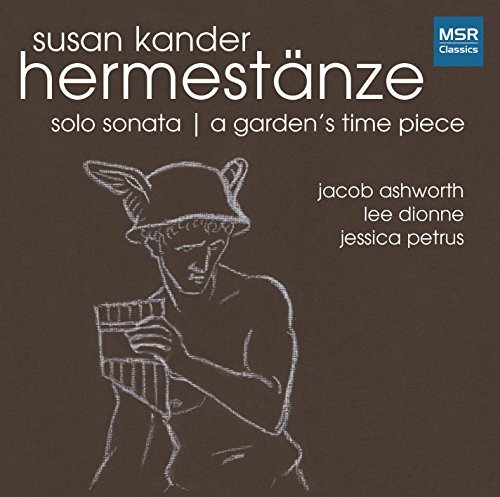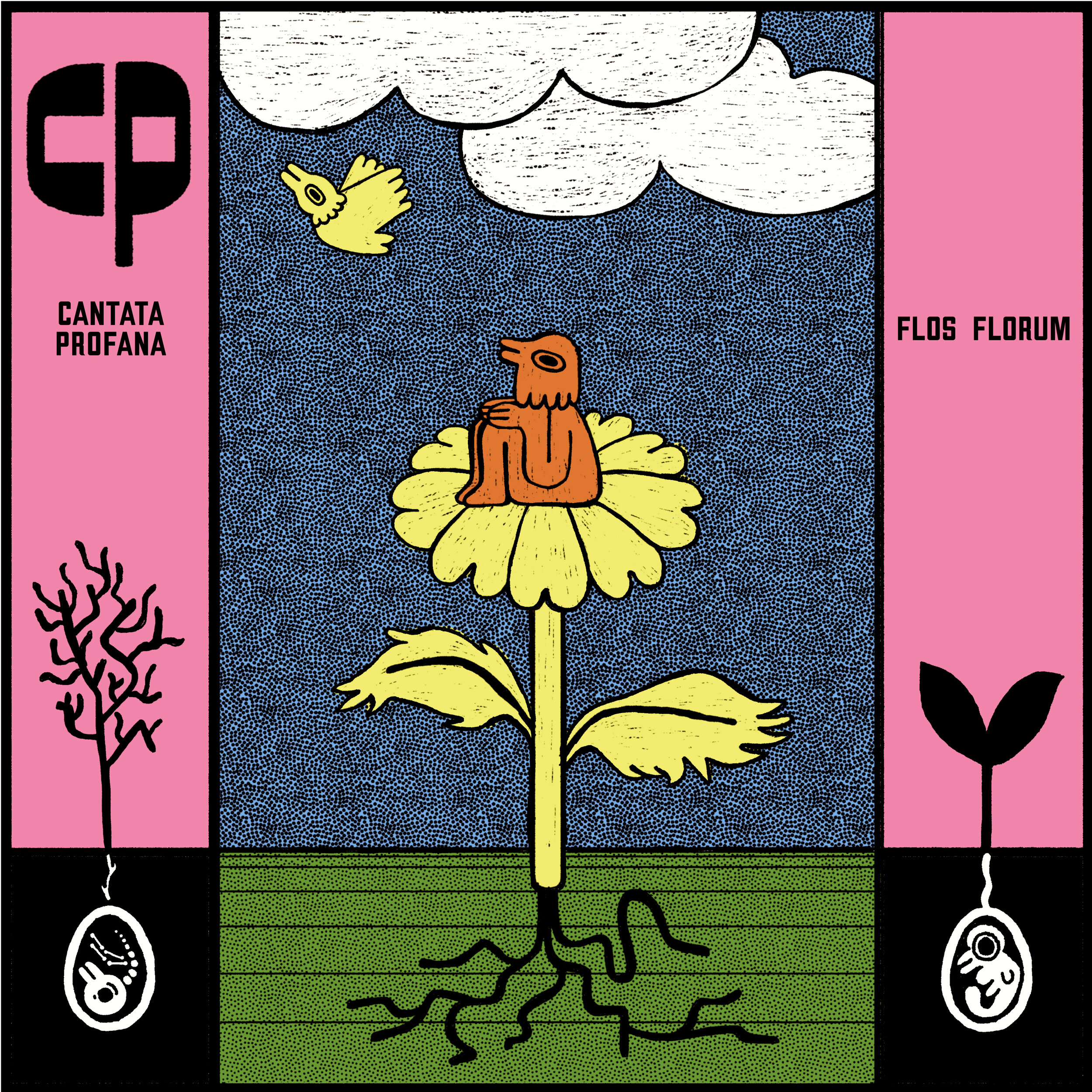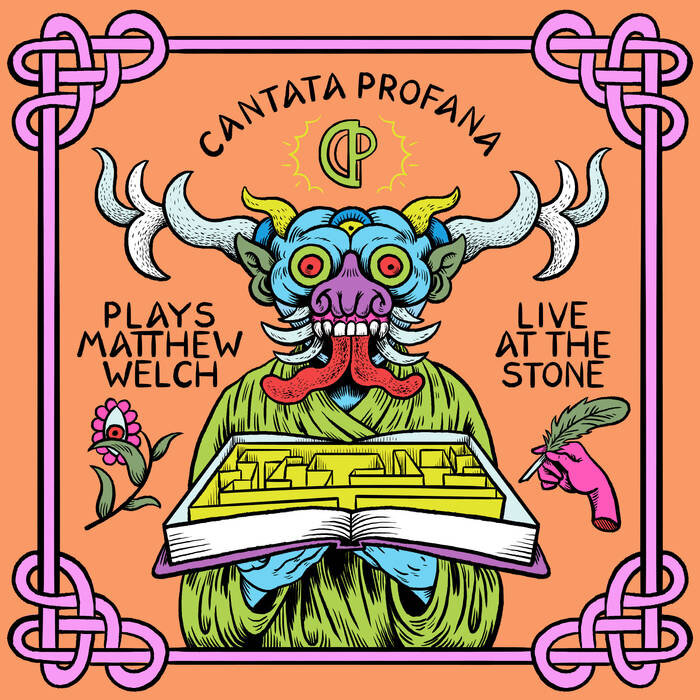APPEARS ON:
Susan Kander: Hermestänze
My first solo album, a record of incredible new works for violin by Susan Kander, now available on MSR Classics.
The album features three works: Hermestänze, a cycle for violin and piano which I commissioned in 2014; Solo Sonata for violin-viola-violin, an irresistible piece with virtuosic outer movements written for the violin and a wrenching Lament for solo viola in the middle; and A Garden's Time Piece, a beautiful, heartfelt cycle for violin and soprano based on poems of Leslie Laskey.
PROGRAM NOTES
SUSAN KANDER
The music of Susan Kander has been heard throughout the United States and in cities around the world, including London, Paris, Mexico City, Lima, Birmingham, Vancouver, Cape Town, St. Petersburg and Guangzhou. Kander has received numerous commissions from notable ensembles and organizations, including the National Symphony Orchestra, Southampton Chamber Music Festival, Kansas City Chorale, Copland Fund, Columbia Foundation and a variety of instrumentalists and ensembles. In the operatic world, she has received commissions from Opera Minnesota, Lyric Opera of Kansas City, Opera Theater of St. Louis and Columbus Opera. Her 2013work, Hermestänze, for violin and piano is a rare example of a large-scale dramatic cycle written for the violin. Kander is especially proud to have had her Solo Sonata for violin-viola-violin performed by commissioner Yuval Waldman in the Composers’ Forum in St. Petersburg, Russia, during their White Nights festival. A Fellow of the MacDowell Colony, Kander’s chamber music has been recorded on the MSR, Navona and Loose Cans labels. www.SusanKander.net
HERMESTÄNZE for violin and piano
In 2013, violinist Jacob Ashworth pin-pointed a serious hole in the violin repertoire: he went looking for something to match the great piano cycles and song cycles written in the 19th century by composers like Beethoven, Schumann, Schubert, Chopin and so many others, but found nothing comparable for violin. In response, he commissioned me, his mother, knowing my passion for character and theatricality in chamber music, to write “a song cycle for violin and piano.” After much discussion, we settled on Hermes, a first rank Greek god of so many parts and responsibilities and tales that an extended batch of movements would be great fun to compose. Hermestänze is the result. The fourteen movements depict Hermes, his extended family of great gods and mortals and a few of the stories in which he figures. Hermes was the messenger of the gods, and the god of travelers; he was a renowned trickster; he invented music (though his brother, Apollo, was the god of music) and he invented the first string instrument: the lyre. First and foremost, however, was his sacred and compassionate task of escorting the souls of the dead down to the edge of the River Styx, which they would cross over into Hades. One of the most complex fellows ever, he has proven to be a perfect subject for a cornucopia of musical tableaux.
SOLO SONATA for violin and viola
Though I did not know it at the time, the Solo Sonata was the coming together of two disparate but major events in my life: the infamous 9/11/2001, and my first opportunity to write for a virtuoso musician. Shortly after the World Trade Center towers went down, violinist Yuval Waldman came to me with the concept of a three-part solo work with viola featured in the middle movement. While thinking about the piece I would compose, I read an article referring to the phenomenon of “feast-famine-feast:” a cycle in which we are complicit in creating a disaster, experience a period of mourning and self-examination, then re-engage with almost a blind vengeance in the behavior that triggered the disaster in the first place. My outline for the piece comes from this idea. Unifying the movements are the same five notes, very differently deployed, to be sure. These pitches, as an opening gesture, came to me while looking at a collection of small Paul Klee watercolors at the Metropolitan Museum of Art. The first movement, Capricciosa, is the more-or-less innocent dance of a young girl in rondo form, followed by Lament, in which the viola describes the immediate aftermath of something horrific. Both these movements make significant use of the five-note gesture. Finally, Malevolent Dances unleashes the furious denial of a dangerous, unresolved reality and, after the opening howl, throws it away forever.
A GARDEN’S TIME PIECE for soprano and violin
A Garden’s Time Piece was commissioned to celebrate the ninetieth birthday of artist-poet Leslie Laskey. Choosing text from his 2010 collection In Bright Light and Dark Shadow, I enjoyed using just the two voices – soprano and violin – to set his clean, evocative lines of nature, life and love across time and space. The voice of the violin expresses the underlying emotional complexity of the soprano’s deceptively simple lines.
--Susan Kander March 2017
Cantata Profana: Flos Florum
An album of live performances from the 12th century to today by Cantata Profana.
From Machaut and Dufay to Vivier and Ligeti, this album shows what Cantata Profana is all about. A fantastical romp through some of the most exquisite chamber music imaginable, featuring me on modern violin, baroque violin, renaissance vielle, and conducting.
PROGRAM NOTES
We kick off with the greatest poet-composer of the 14th century, Guillame de Machaut. Writing in the twilight days of the trouveres — the northern cousins of the better-known troubadours, those great lyricists who spilled out love songs steadily to their patrons — Machaut was also lucky enough to have a church gig. Consequently he was uniquely poised not only to master the secular styles of courtly love, but also to birth the idea of the Catholic Mass as a unified piece of music. Pioneering in his liturgical work, he loved a good throw-back in his secular songs. Here he cleverly uses one of the standard “formes fixes,” the Rondeau (which goes ABaAabAB for those keeping score) to enjoy a small pun when the poet repeats his mantra in quotation marks.
From Machaut we go back even further in time to the medieval poet-composers of the original Carmina Burana…
…read more on bandcamp.
Cantata Profana plays Matthew Welch at the Stone
A memorable night on the Lower East Side. A retrospective of Matt Welch’s wonderful wandering music.
PROGRAM NOTES
From the New York Times’ review: “The music of Matthew Welch, who began a weeklong residency at the Stone on Tuesday, draws on a world of influences. His opening set, performed by the ensemble Cantata Profana, packed in references to Highland bagpipes, Balinese funerary rites, Minimalism, Borges, Beckett and Buddha. Yet much of the resulting chamber music is exquisitely ethereal, made up of delicate, transparent textures that hum with expressive tension. If Mr. Welch were a chef, he’d be the kind who pushes the boundaries of molecular gastronomy, transforming earthy ingredients into translucent beads of pure flavor…”
…read more on bandcamp.



